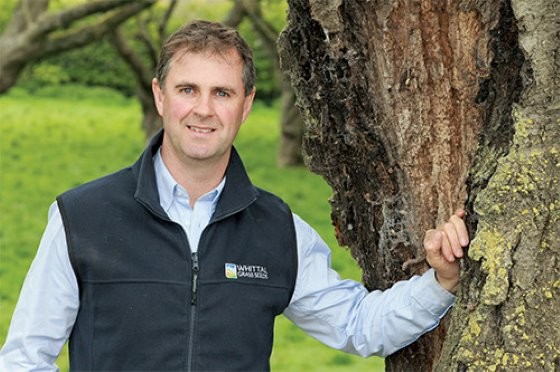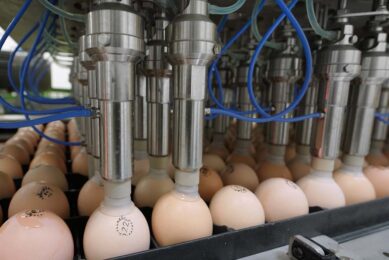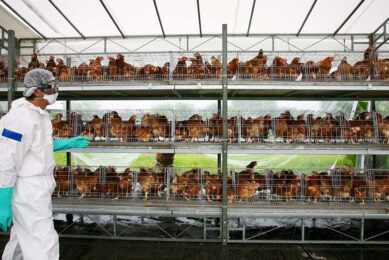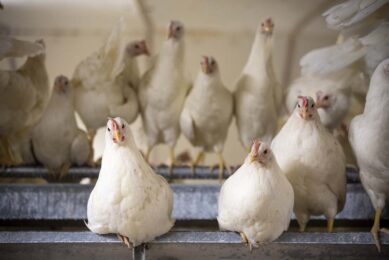Seeding between flocks to keep swards in top condition

Good grass management is central to the public’s perception of free range poultry production, says Philip Whittal who runs 12,000 layers at Bowling Green Farm near Hereford.
The 300ha farm grows wheat, potatoes and oilseed rape. It also produces premium grass seed mixes for the family business, Whittal Seeds.
The 12,000 birds are subdivided into 4 flocks of 3,000 with 4 ranges surrounding the housing.
Eggs are produced for Noble Foods under the Happy Egg scheme. For the top 5% of farms, audited according to Noble’s own criteria, there is a 2p/egg premium, says Mr Whittal.
The range is taken into account in this audit so there is a financial benefit to good grassland management and encouraging hens to range freely, he says.
On his unit hens will range long distances from the house once they learn there are grubs, insects and shelter out on the range.
It is important to encourage this behaviour from the moment the first pop-holes are opened for the new flock, Mr Whittal says.
To do this he ensures there is a good sward close to the house so it is visible to the flock and the birds are enticed out from day one.
Top up cost
Specialist seed £60-£70/bag/acre.
Grazing ley £50/bag/acre for the agriculture mix on the outer part of the range.
Premium poultry range grass mix.
• 4kg hybrid ryegrass
• 3kg intermediate diploid ryegrass
• 3kg late diploid ryegrass
• 5kg turf perennial ryegrass
• 5kg strong creeping red fescue
• Total 20kg bag
However, close to the hen house bird stocking density is the equivalent of 50 sheep per acre and there will be little grass left around the house after the previous flock, he says.
“To get grass to grow in the interim between flock depletion and letting the new birds out we reseed bare patches and top up swards with a fast-growing specialist grass mix,” Mr Whittal says.
This has to be carried out immediately after the previous flock is moved out.
On the Whittal’s farm the pasture is not resown but topped up by spreading seed from an ATV-mounted spinner.
Low temperatures in December, January and February are the only times of the year when it may not be worth putting grass seed down on the bare patches, Mr Whittal believes.
“We don’t scratch the surface; we just spin seed on and top-up the sward at a rate of about 30kg/acre.
“The specialist mix contains fast-growing perennial ryegrasses to establish quickly.
“It is possible to create a decent cover up to 3m from the pop-holes by the time the new flock is let out,” he says.
The ryegrasses allow the hard-wearing but slower-growing amenity varieties like fescues and meadow grass time to establish.
These varieties can withstand pressure and persist as close to 10m from the house well into the lay towards flock depletion.
In areas further from the house which are less likely to have a heavy stocking density, a more standard agricultural grazing ley mix is broadcast to top up the sward at about 14kg/acre.
 Beheer
Beheer








 WP Admin
WP Admin  Bewerk bericht
Bewerk bericht